What do we do?
The other day, I listened to two excellent interviews with the same person, Jean-Baptiste Fressoz. One with Nate Hagens, one with Rachel Donald.
Fressoz wrote the book (that I have not yet read) "More, more, more!" about materials and civilization. We have kept using more of everything, all the time. One of his main points is that talk about "energy transitions" is a story based on a false history.
I guess you have heard the story that we used to use wood for heating, then we found coal and shifted to that power source. Later oil took over and now we are on the cusp of shifting to renewable energy. Right? I had heard it, and I think I also told this story to other people. The problem is that it is wrong. We never stopped burning wood. We burn more wood today than ever before. We use more coal than ever before. We use more oil than ever before. And we use more renewable energy than ever before. So, talking about "energy transitions in the past" is talking nonsense.
Talking about "energy transitions" in the future is more interesting. Not because we will change to solar and wind and everything will be fine. But because we will have to shift back to solar and wind, and we will have to make do. There will either be no oil to burn, or we decide to keep the stuff in the ground. In any case, we will not burn much oil a hundred years from now. Maybe not even a decade from now.
So, what do we do with these insights? How can the realization that we will have much less energy in the fugure help us choose better what to do every day? Those questions I ponder when I weed the fields where the new hazelnut bushes will be planted tomorrow. (I did write a chapter about the myth of eternal availability of cheap energy in my book about popular delusions that block the transition to a sustainable civilization.)
Nuts
Nut course at Holma Community College
We started a new round of the Nut growing course at Holma earlier this month. It is the third year we run the course and interest is strong.
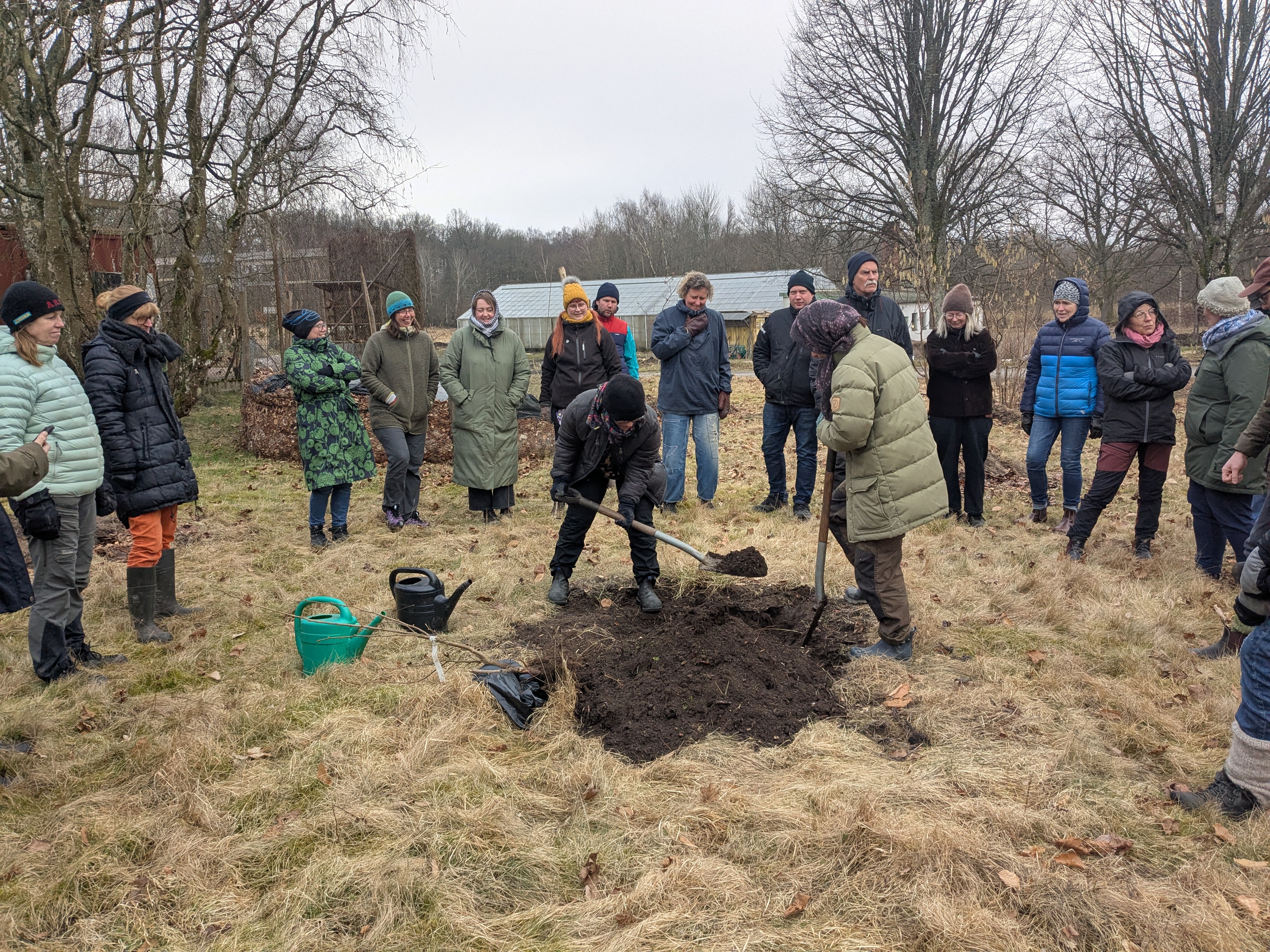 We start the course by planting a nut tree together
We start the course by planting a nut tree together
Excellent intern
This spring we will have three interns at the tree nursery. The first one is a cider expert, who is diversifying into nuts. I learned a lot from this experienced vegetable grower and we planted out quite a lot of walnut trees.
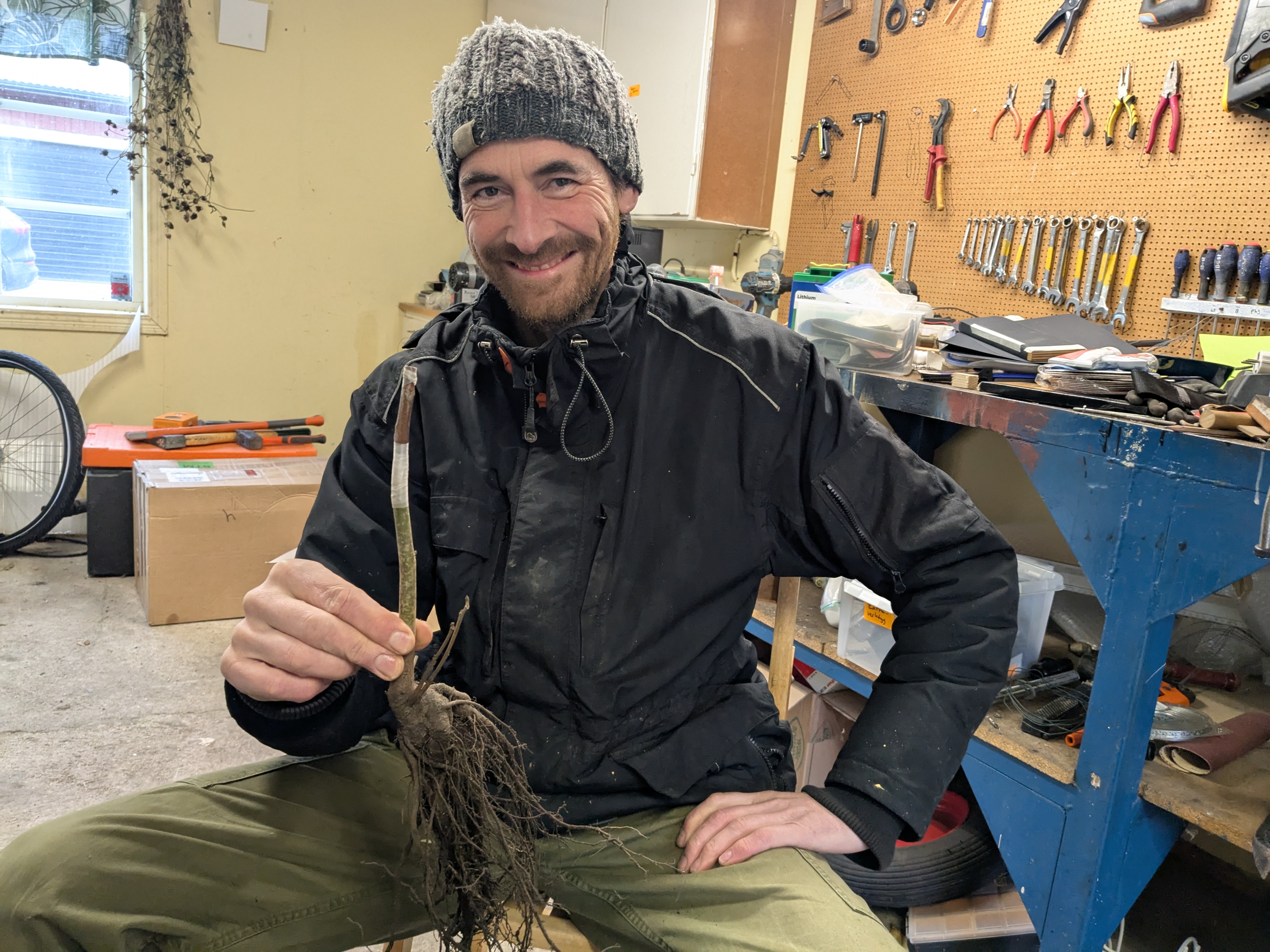 Happy intern, grafting his first walnut tree
Happy intern, grafting his first walnut tree
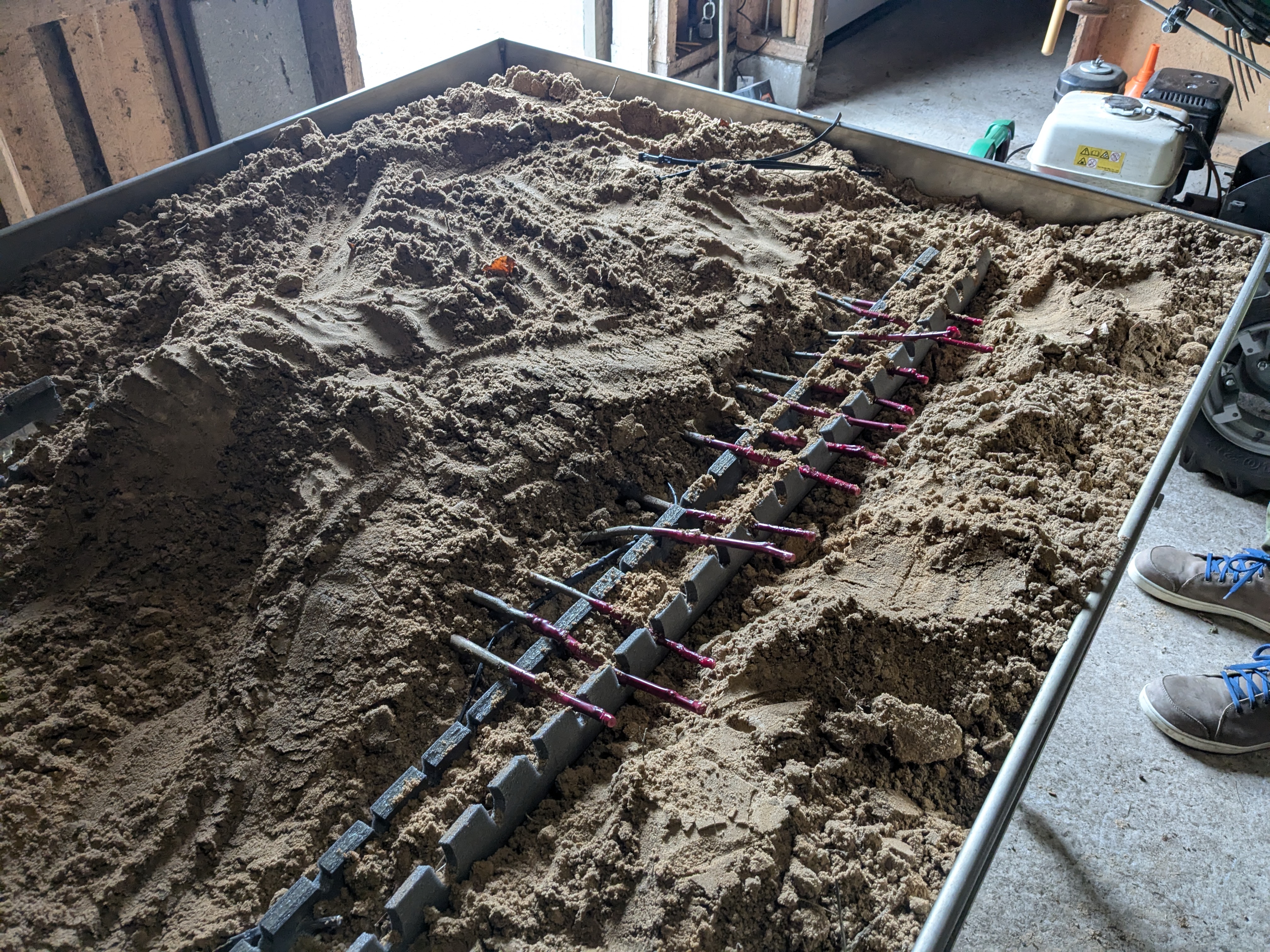 The walnut trees go into a hot-pipe callus system for three weeks
The walnut trees go into a hot-pipe callus system for three weeks
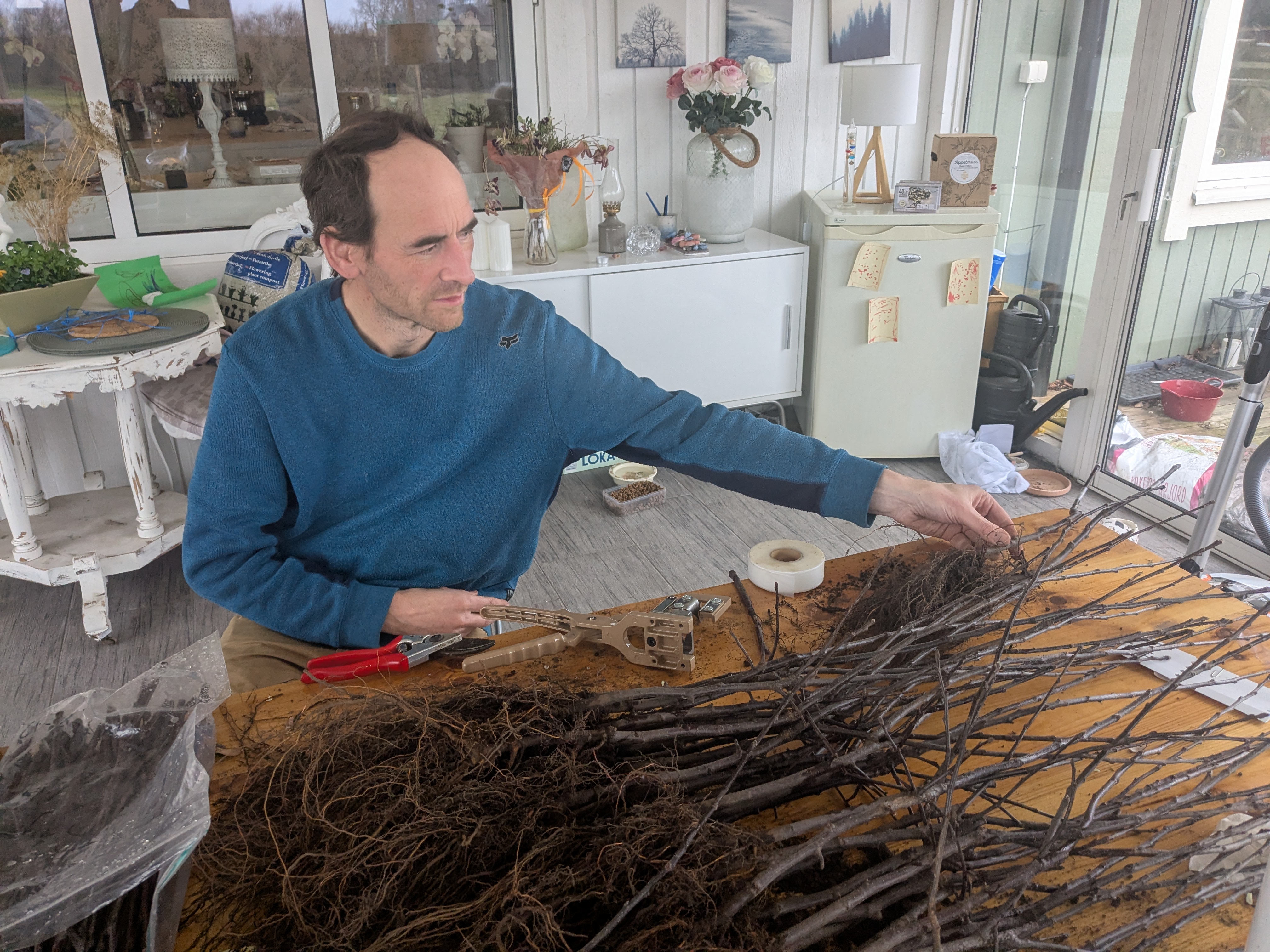 We went to our friend Josefine to help her graft 200 apple trees for her new orchard.
We went to our friend Josefine to help her graft 200 apple trees for her new orchard.
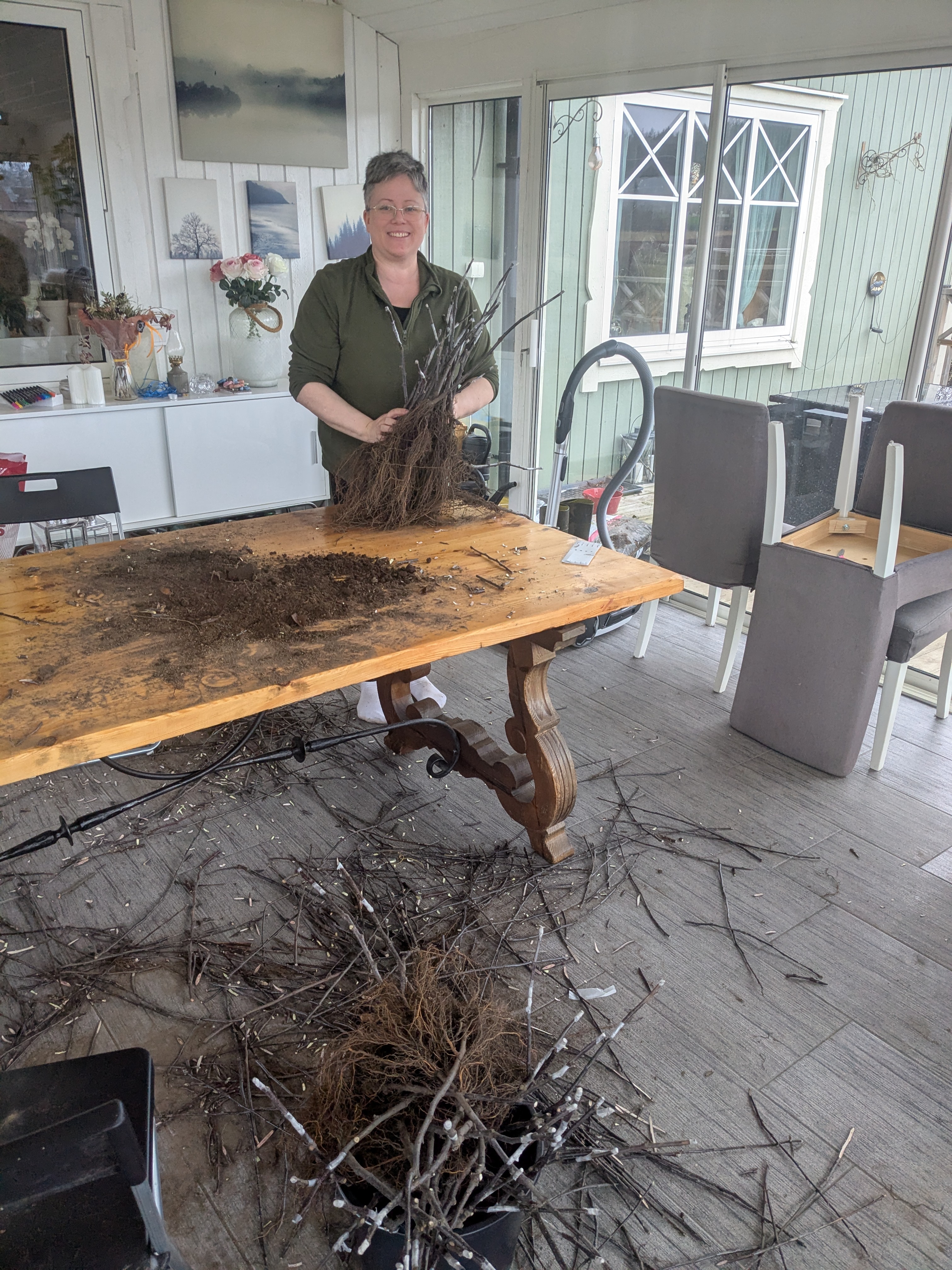 Josefine was happy with the trees.
Josefine was happy with the trees.
Seeding time
We are also seeding the nuts that are starting to sprout. Most of the chestnuts are now in the ground, and soon the walnuts and treee-hazels will follow.
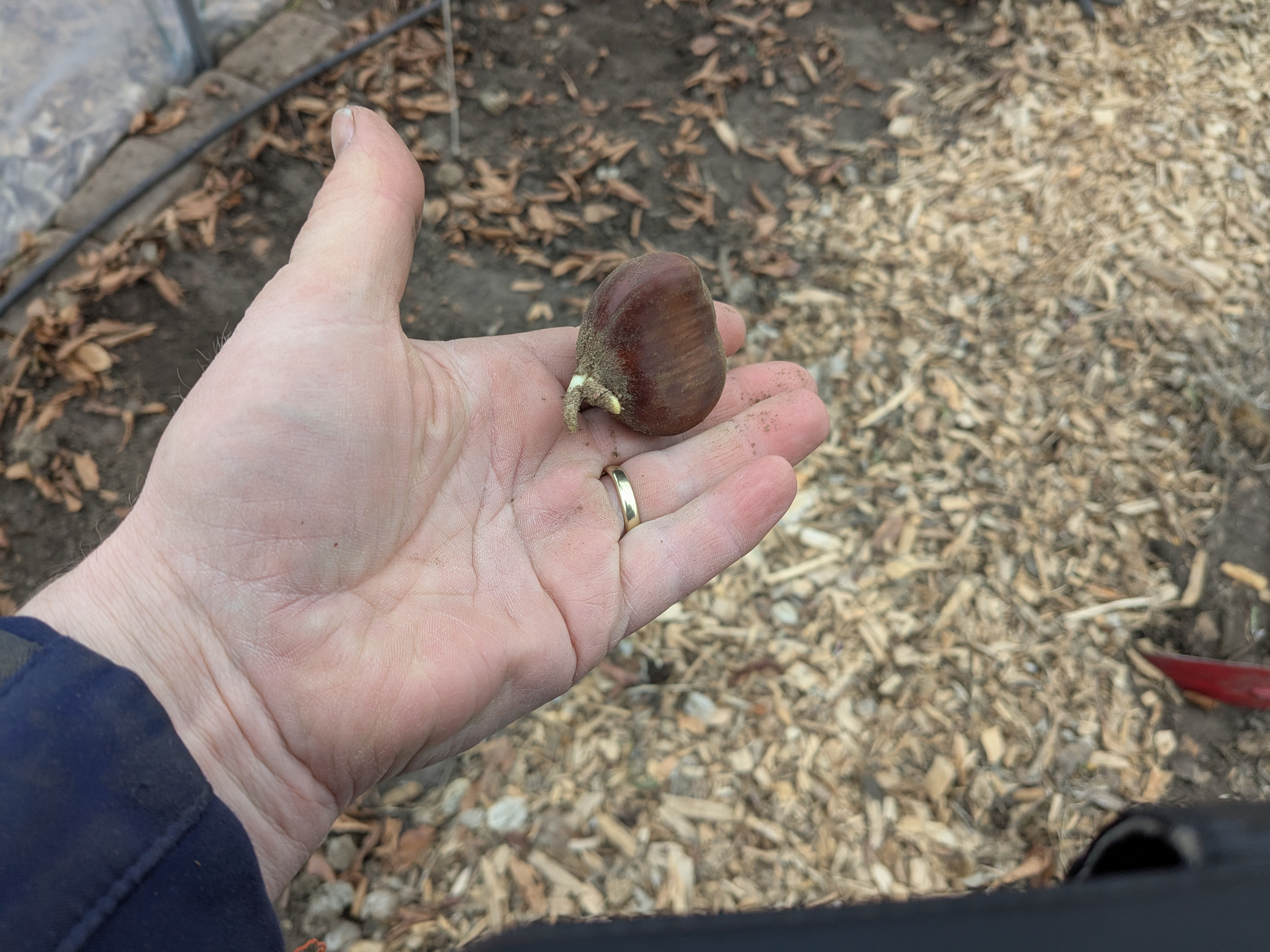 Chestnuts are sprouting first.
Chestnuts are sprouting first.
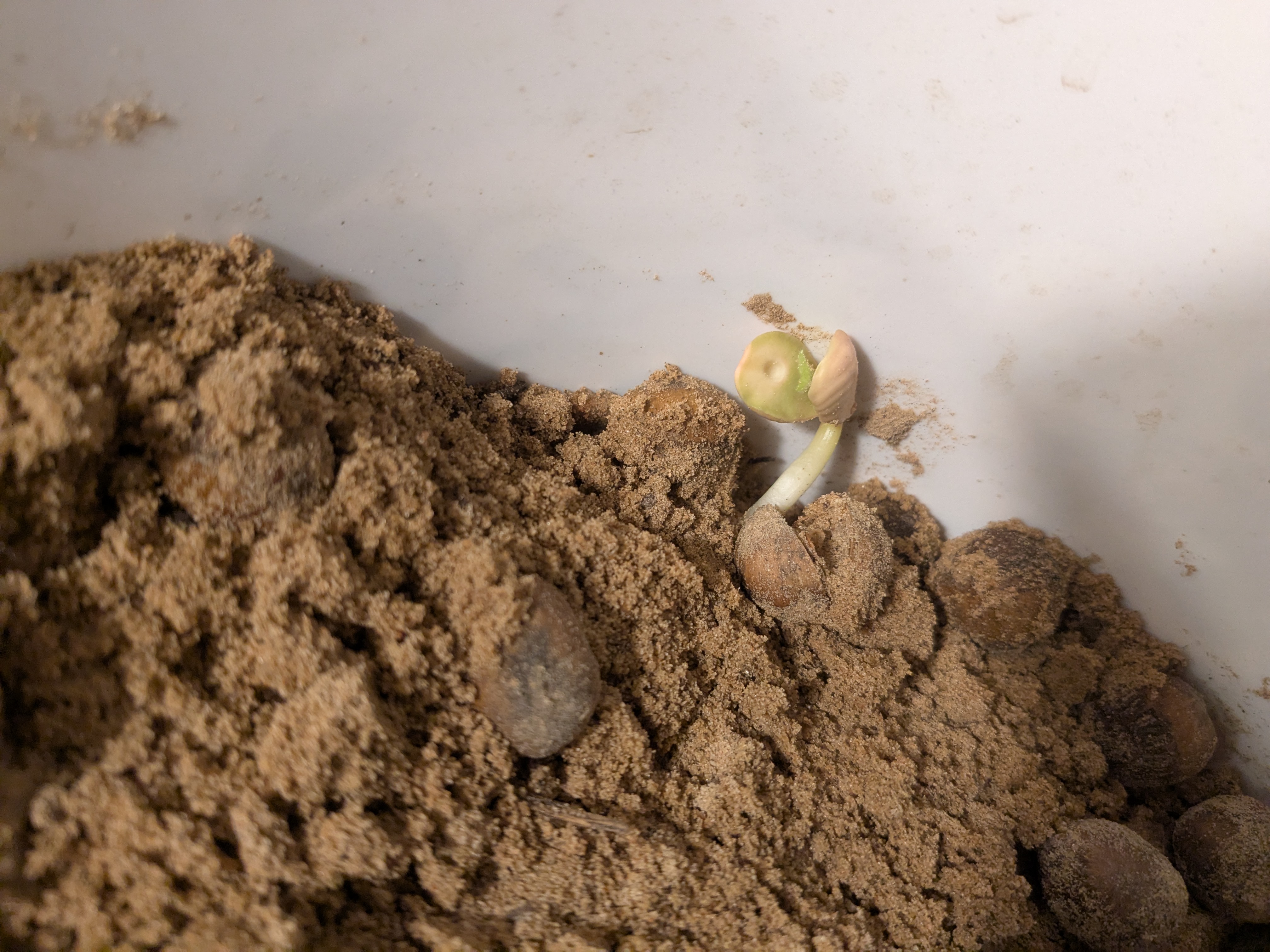 One tree-hazel (Corylus colurna) even started to grow out into a small tree.
One tree-hazel (Corylus colurna) even started to grow out into a small tree.
Cracking nuts
We are running a grant-project to support the establishment of nut culture in Sweden. One of the good things from that kind of project is that we get to purchase tools that we evaluate and share.
After harvest, nuts must be dried quickly, to avoid toxic mold.
Sizing hazelnuts before cracking.
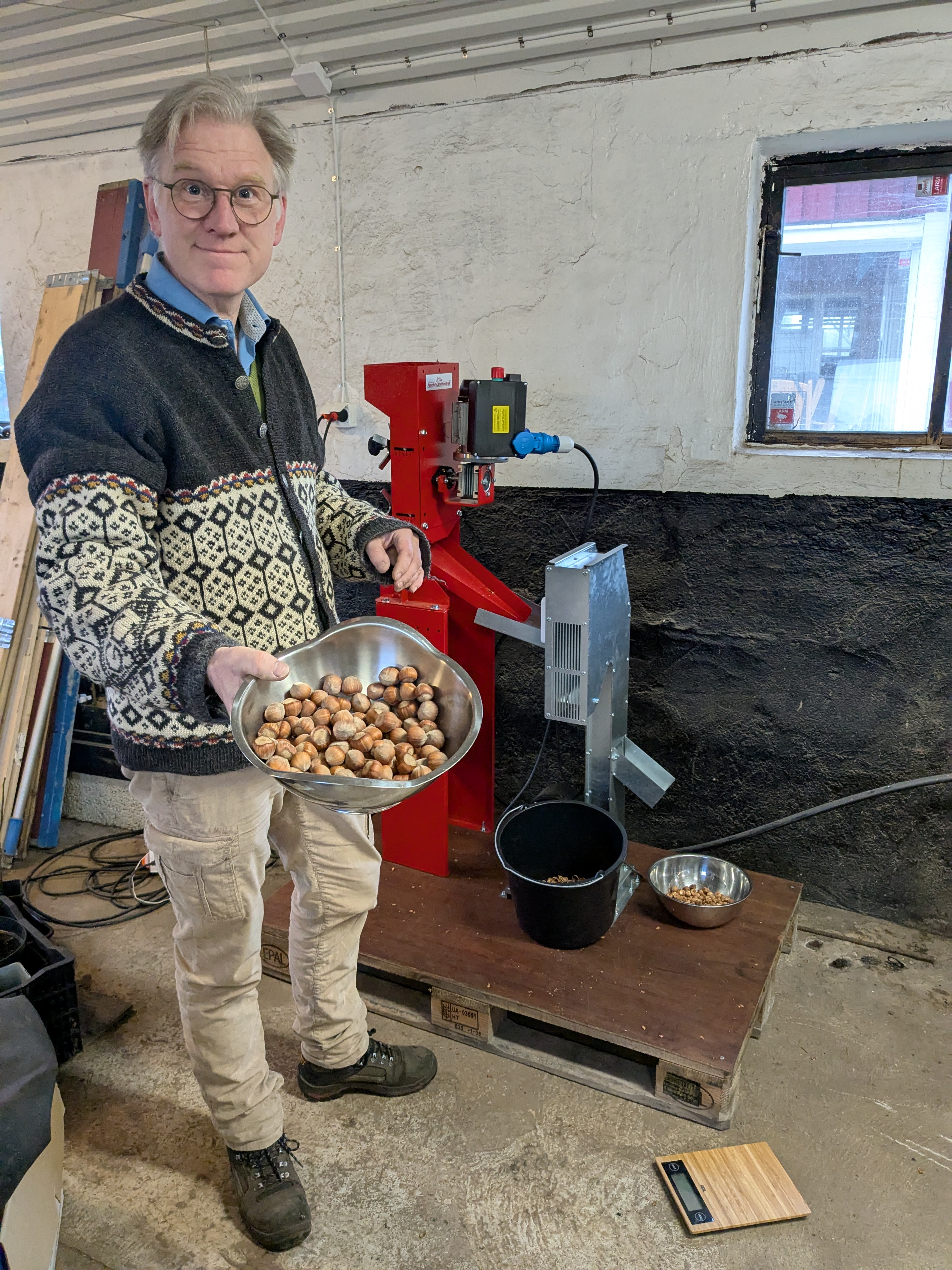 The electric nut cracker is quick and effective, if the nuts are sized well.
The electric nut cracker is quick and effective, if the nuts are sized well.
Another great thing is that we get to meet up with intelligent and fun people. We had a whole day workshop with the smartest people in the Nordic nut world, and learned a lot from each other. We also learned a lot from Tomas from Nordisk Råvara, a company that has reintroduced a series of delicious pulses to the Swedish food market. It is a long journey to get into the food distribution system. For some growers, direct sales will be enough, but for a large chunk of the market, the supermarket system is necessary. (Many customers want to only purchase food at their local supermarket.)
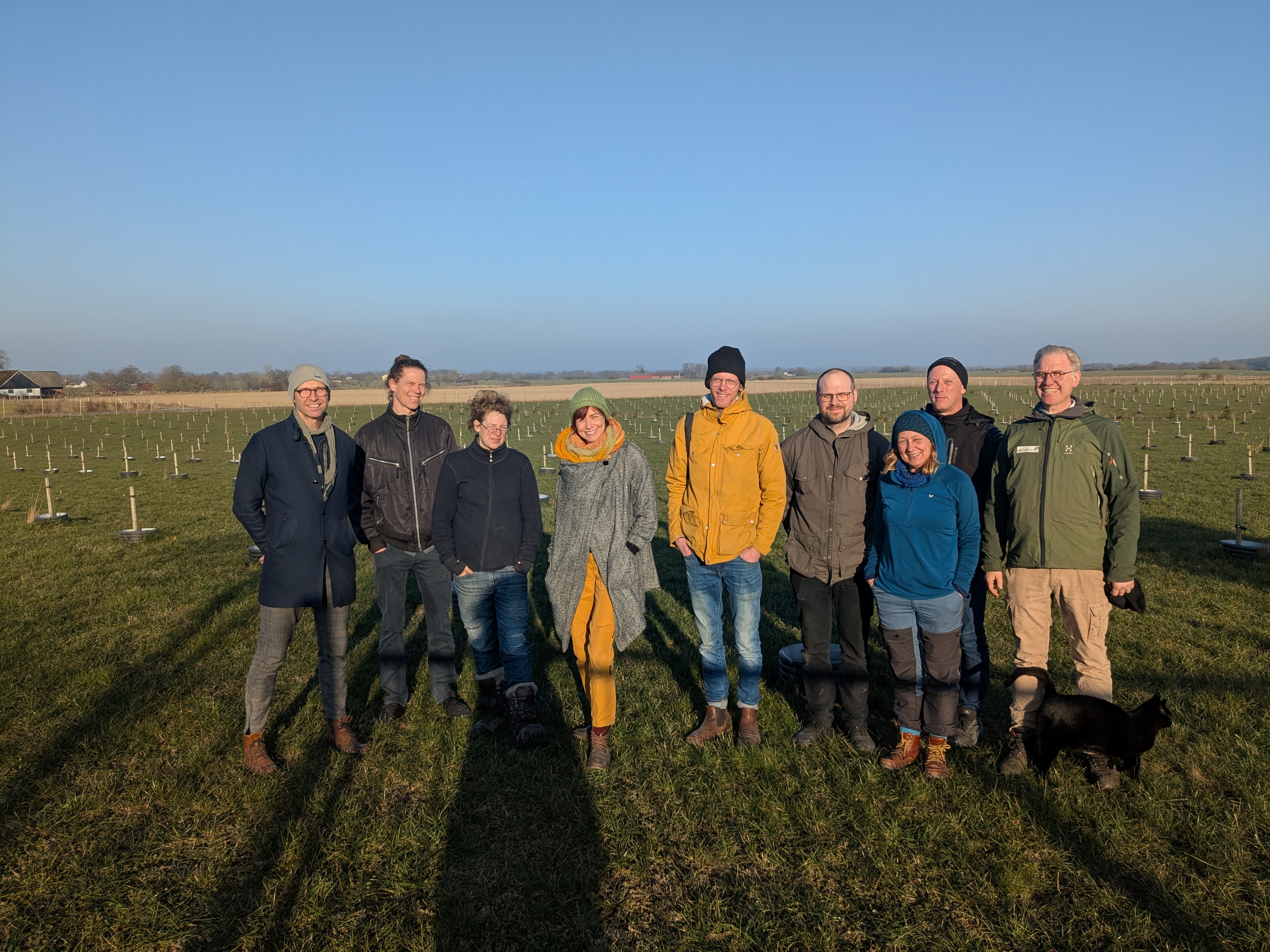 Nordic nut experts - the best ones here.
Nordic nut experts - the best ones here.
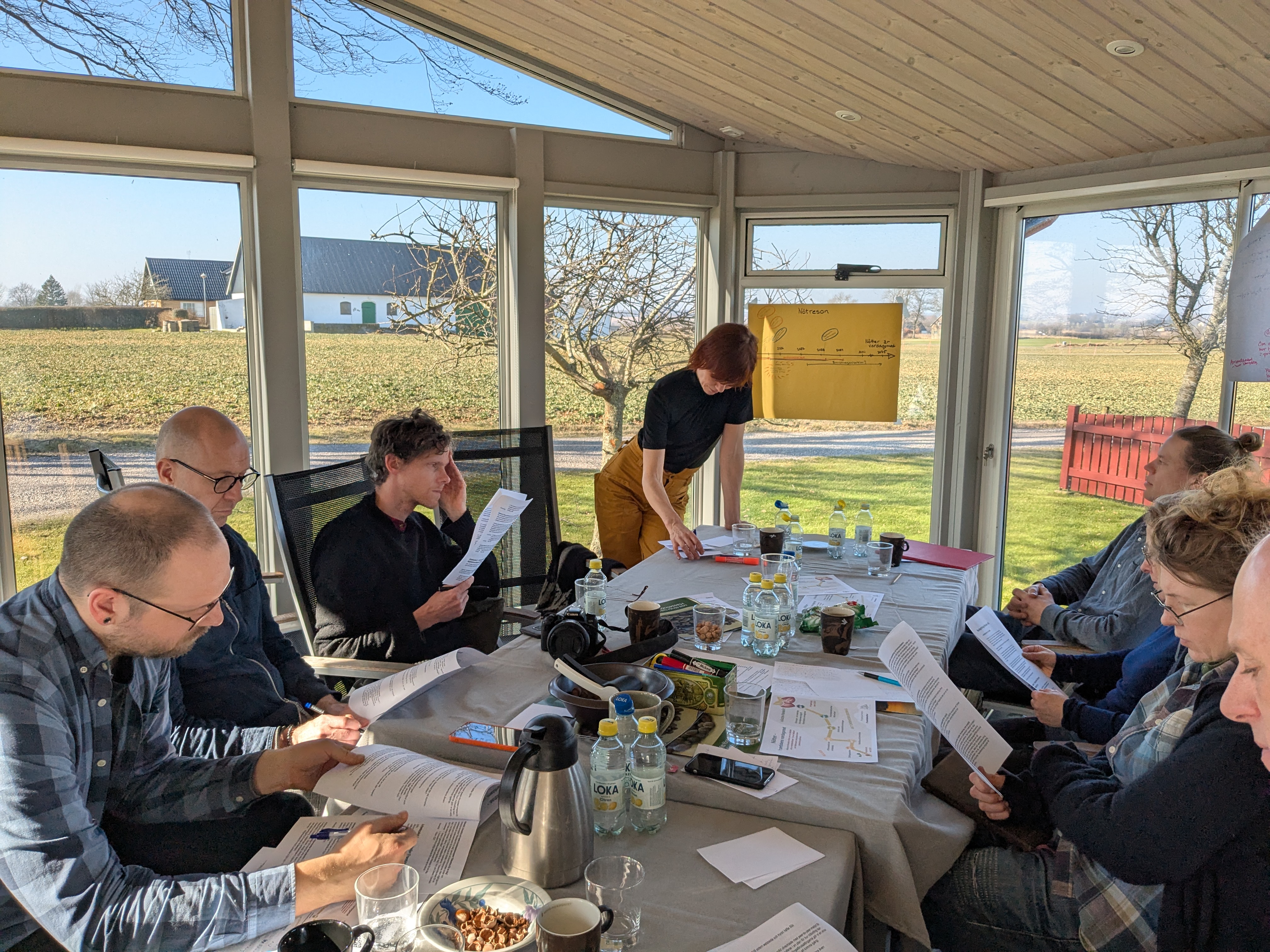 We had a whole day workshop planning ahead - how to build up the value chain?
We had a whole day workshop planning ahead - how to build up the value chain?
Cooking with walnuts
Our friends Lova and VIdar organized a cooking event, where we cooked a three-course meal with hazelnuts as the main ingredient.
A hazelnut-risotto (barley-otto) to start with.
Great nut people for a good meal. The meaning of life?
We all brought our best cooking skills, here Tatjana shows her onion skills.
We also had a short workshop on making tempeh with lentils and hazelnuts. We got some to bring home.
Planting nut trees with friends
March is a good time to plant bare rooted trees. We love to plant trees with friends.
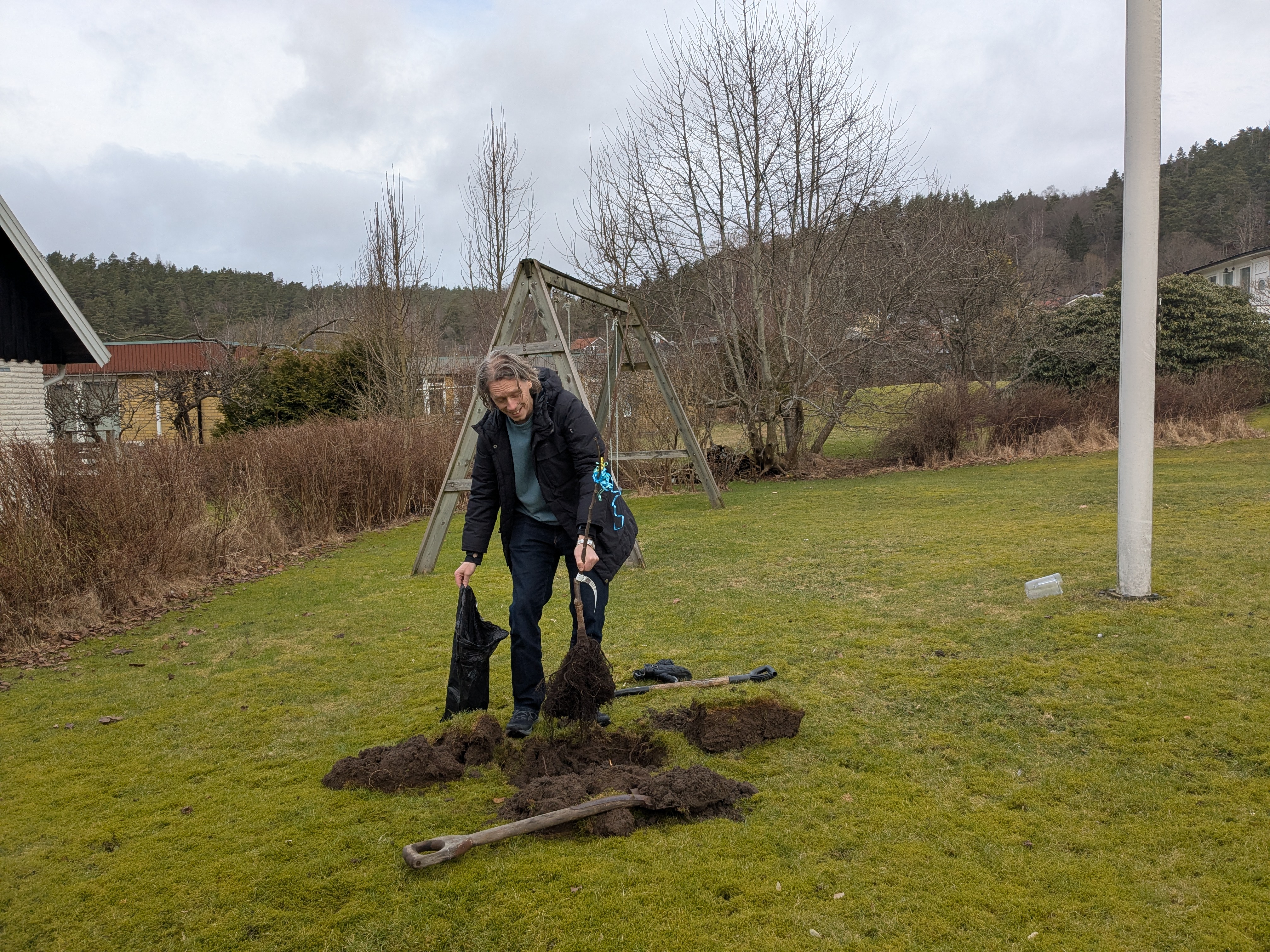 My good friend S. celebrated his 50 years with a dancing party. The next day we planted a walnut tree.
My good friend S. celebrated his 50 years with a dancing party. The next day we planted a walnut tree.
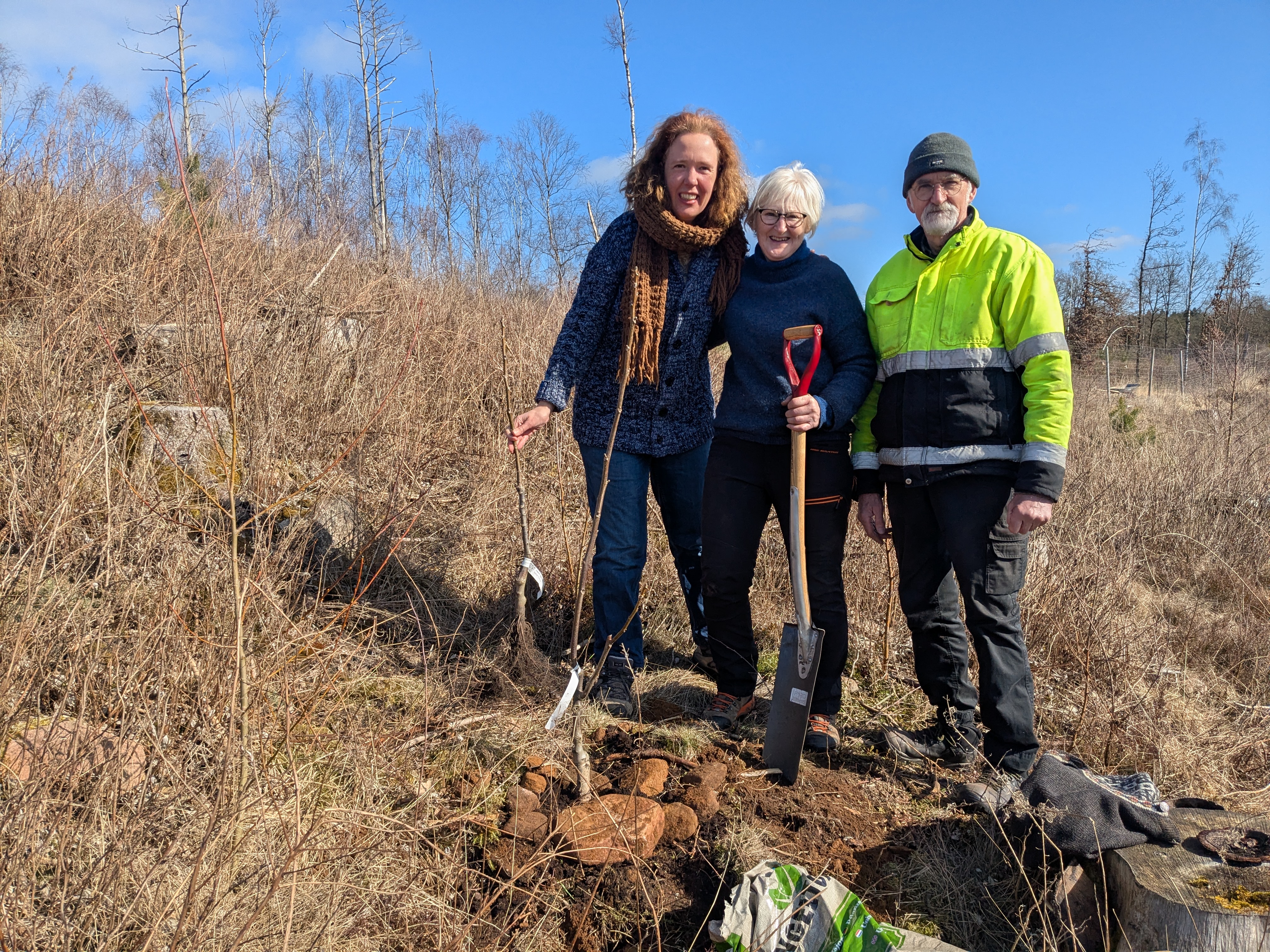 Our friends M. and K. are foresters, and here we do a nut tree trial at one of their replantings.
Our friends M. and K. are foresters, and here we do a nut tree trial at one of their replantings.
Storage
We built a cold storage room during the summer and now it has proven its value. The temperature went down to +1C at the coldest of winter, and now the temperature is slowly rising. Apples and potatoes have stored quite well, and the nut seeds this year look great.
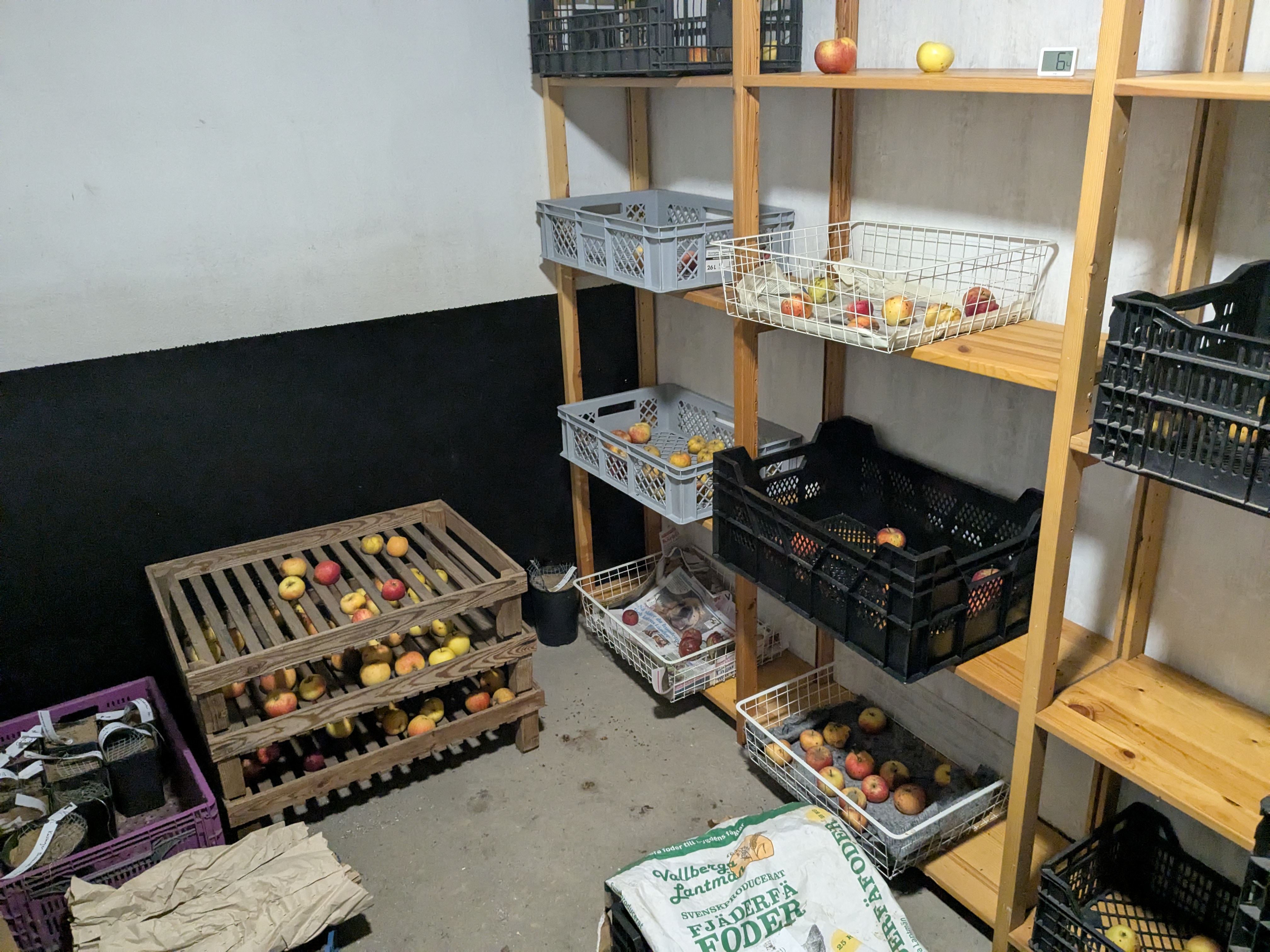 Overview of some of the apples that are still ok.
Overview of some of the apples that are still ok.
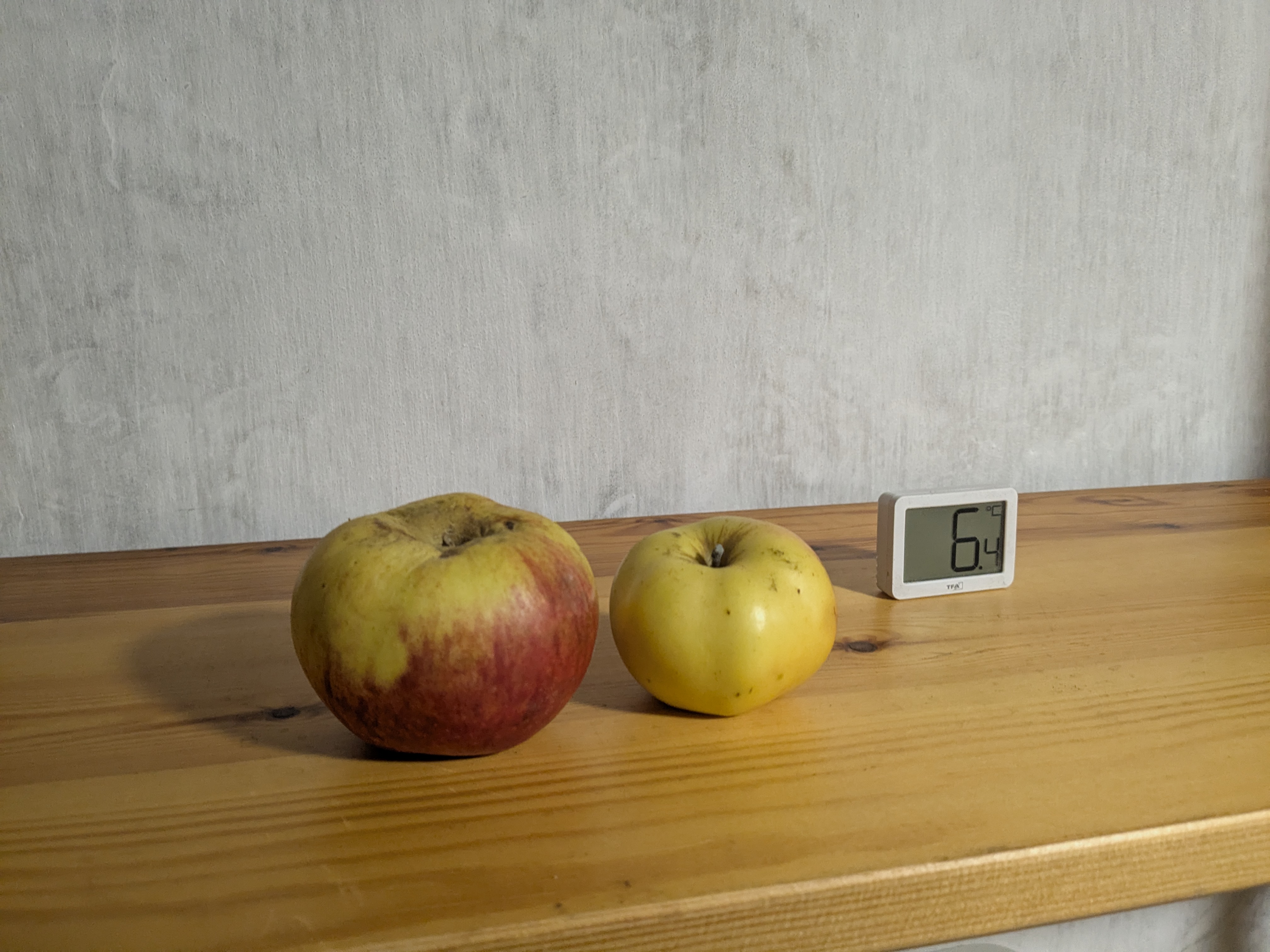 Some apples store remarkably well, they look almost as fresh as when they were picked six months ago.
Some apples store remarkably well, they look almost as fresh as when they were picked six months ago.
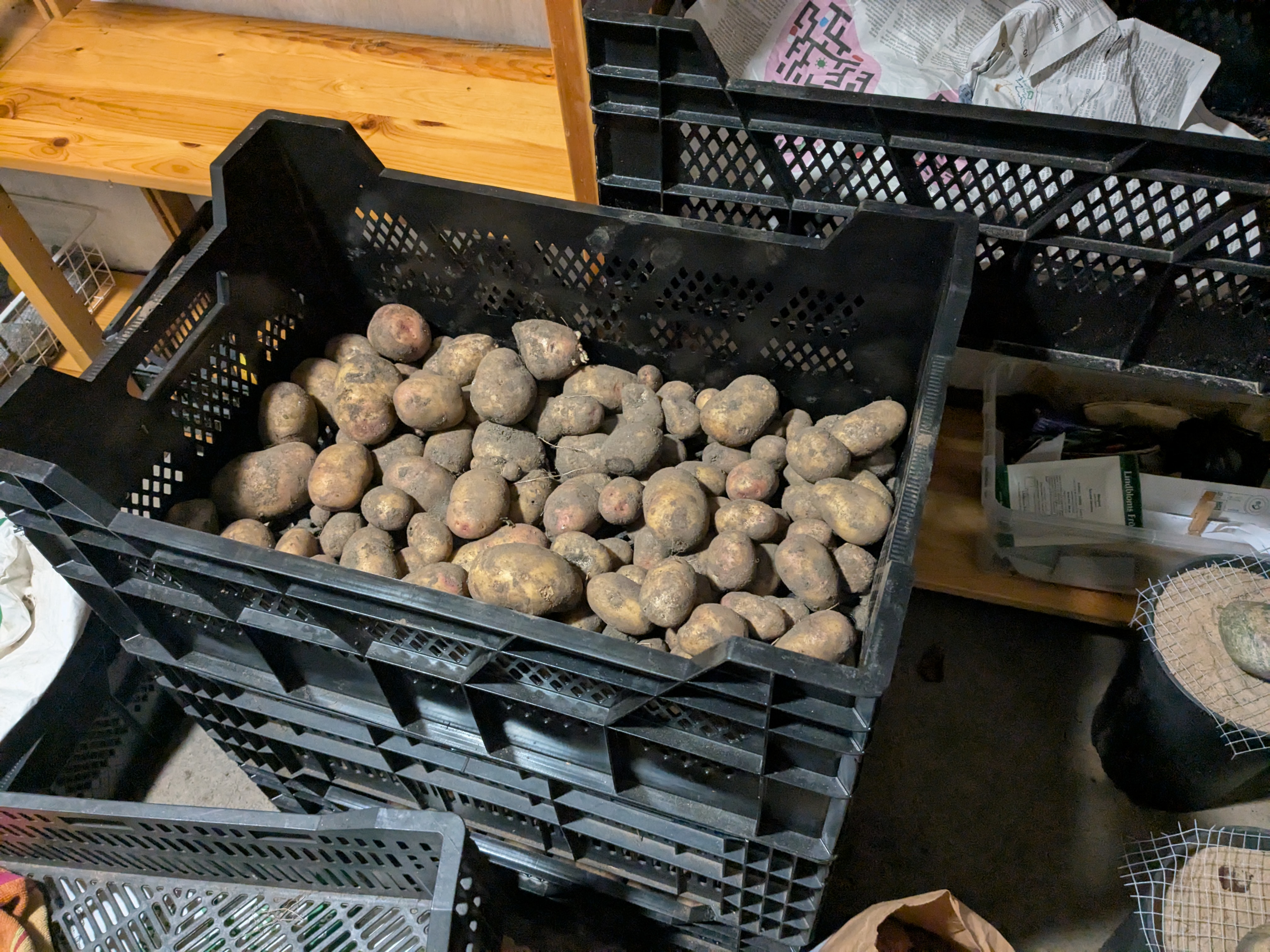 We still have some 30kg of potatoes left (out of maybe 100kg?)
We still have some 30kg of potatoes left (out of maybe 100kg?)
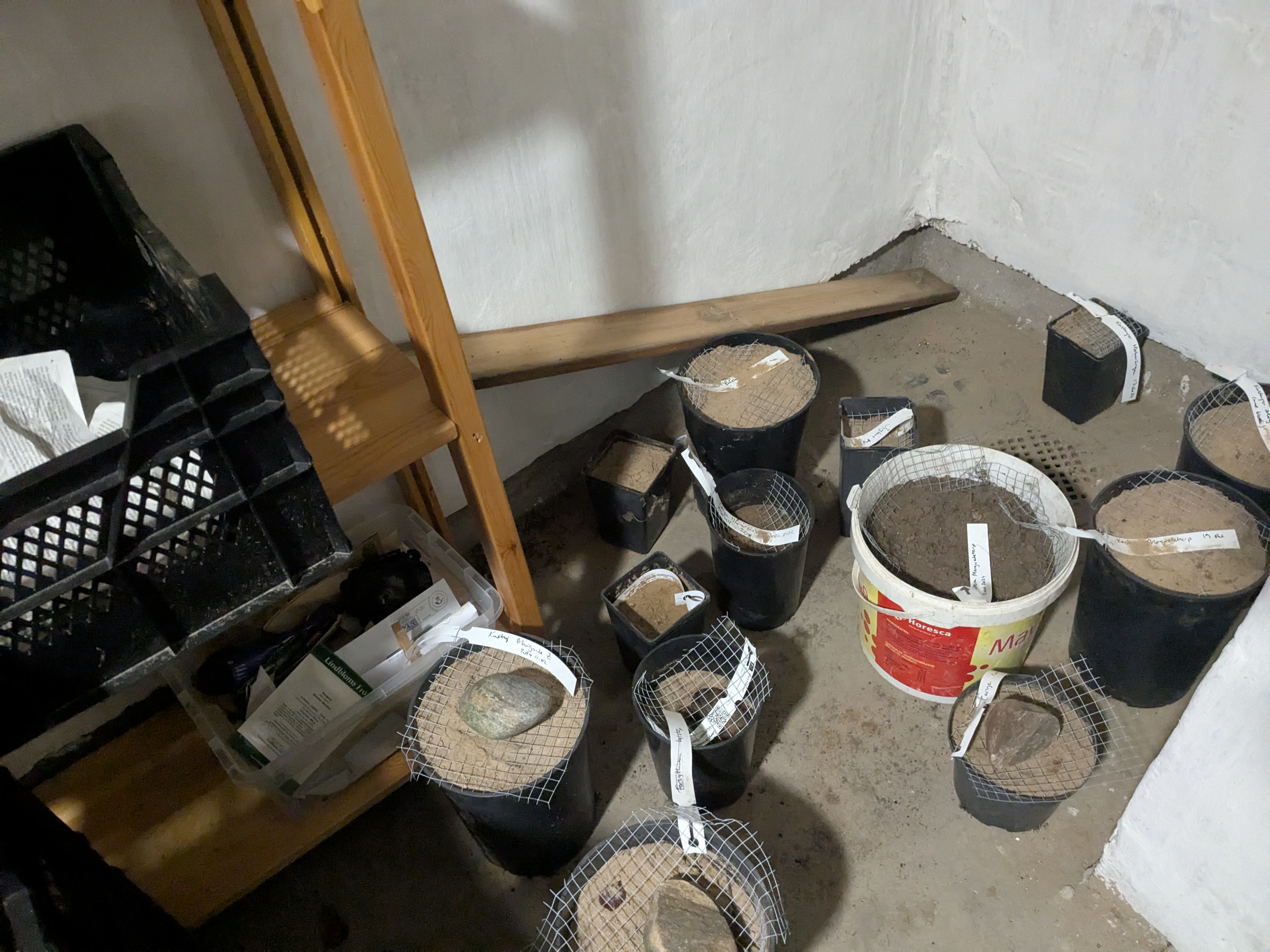 The nut seeds have stored well in here.
The nut seeds have stored well in here.
A walk in the woods
We also took some time off, to walk in the woods. We even had one night out in a tent last week-end. It is great to be out in the forests.
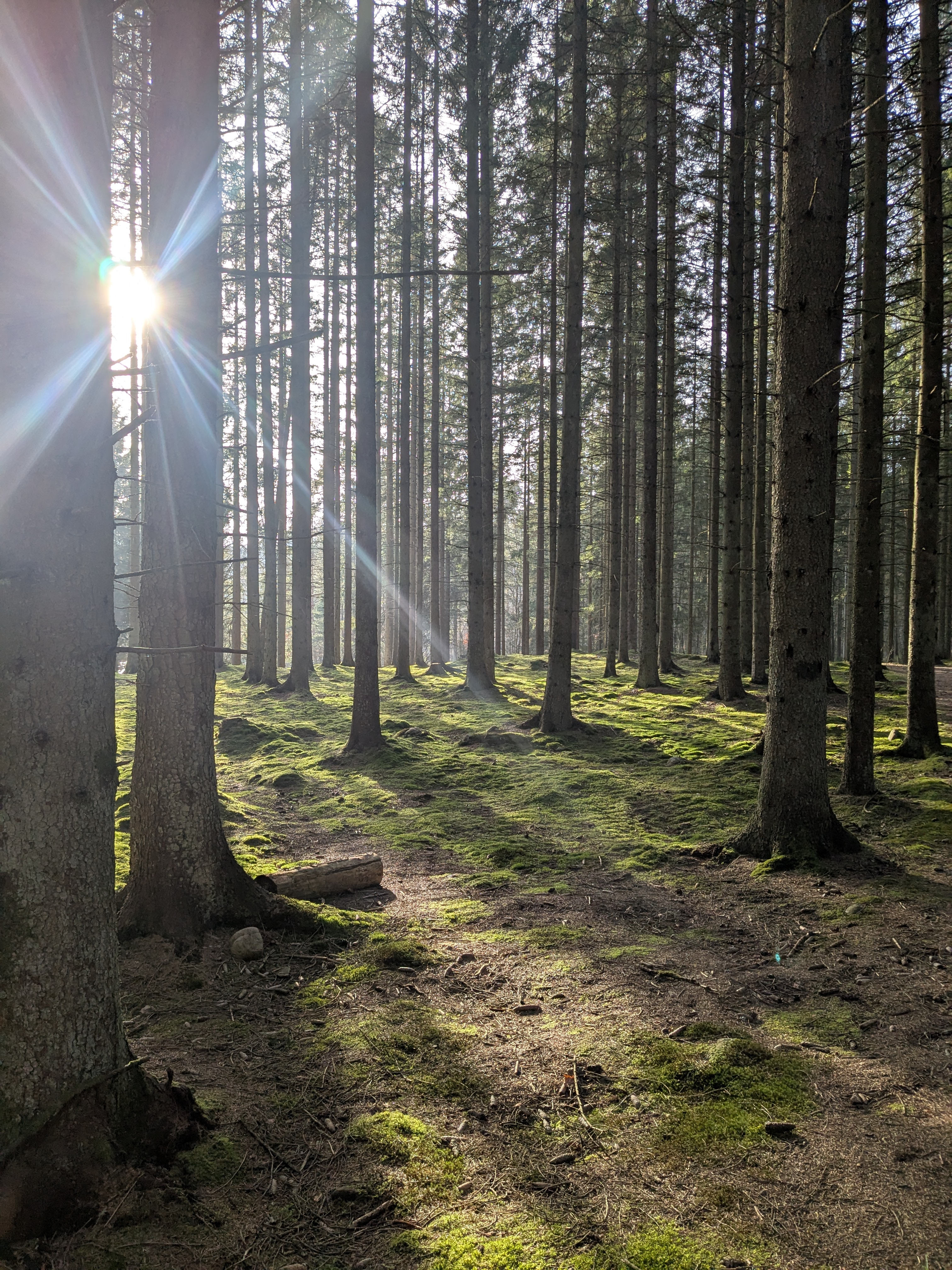 The forest just north of Knäred.
The forest just north of Knäred.
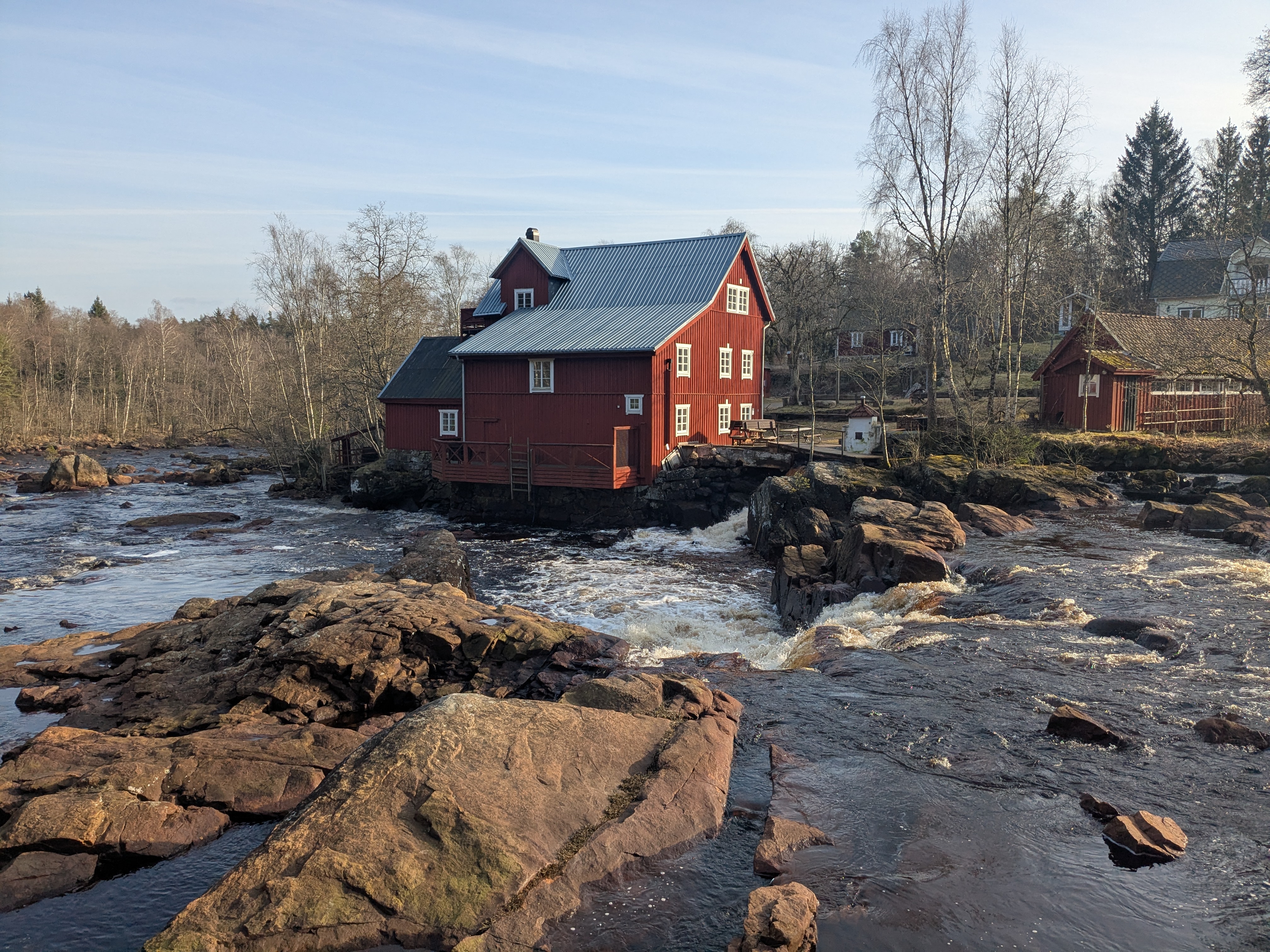 The old mill of Knäred. In the summer it is a café.
The old mill of Knäred. In the summer it is a café.